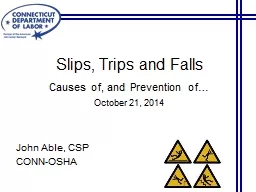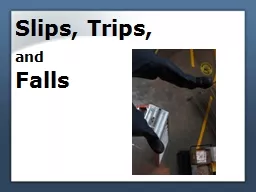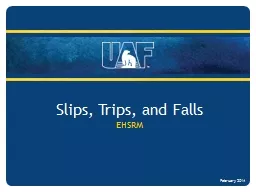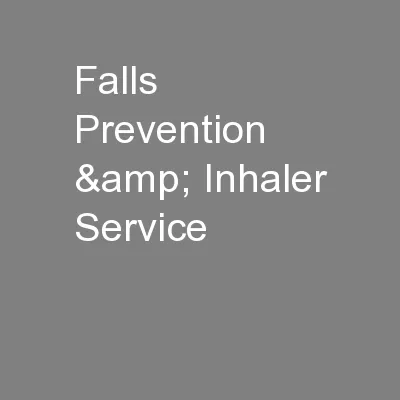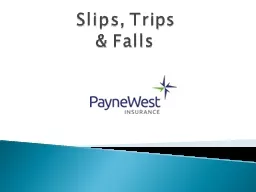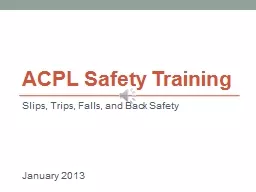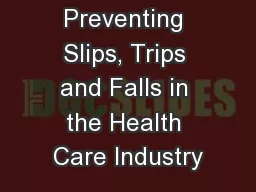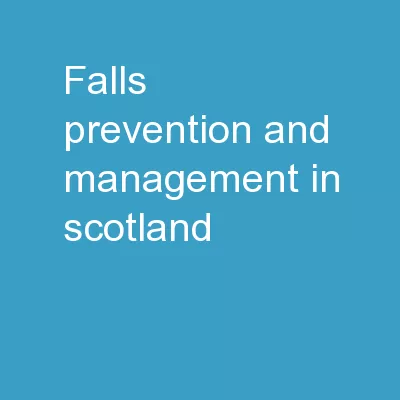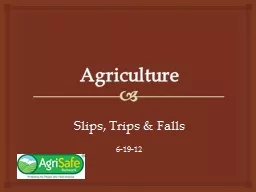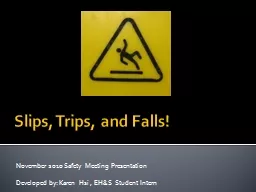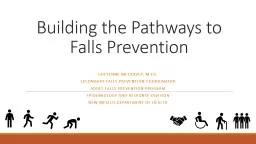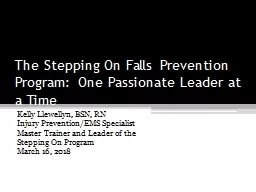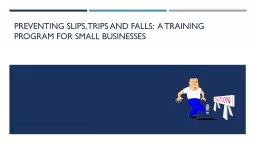PPT-Slips, Trips and Falls Causes of, and Prevention of…
Author : pamella-moone | Published Date : 2018-10-08
October 21 2014 John Able CSP CONNOSHA Think about Slip Trip amp Fall hazardous conditions you have observed Any accidents andor injuries you have seen resulting
Presentation Embed Code
Download Presentation
Download Presentation The PPT/PDF document "Slips, Trips and Falls Causes of, and Pr..." is the property of its rightful owner. Permission is granted to download and print the materials on this website for personal, non-commercial use only, and to display it on your personal computer provided you do not modify the materials and that you retain all copyright notices contained in the materials. By downloading content from our website, you accept the terms of this agreement.
Slips, Trips and Falls Causes of, and Prevention of…: Transcript
Download Rules Of Document
"Slips, Trips and Falls Causes of, and Prevention of…"The content belongs to its owner. You may download and print it for personal use, without modification, and keep all copyright notices. By downloading, you agree to these terms.
Related Documents

